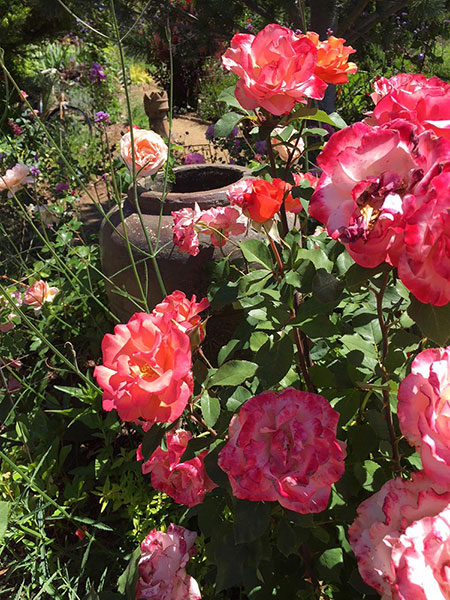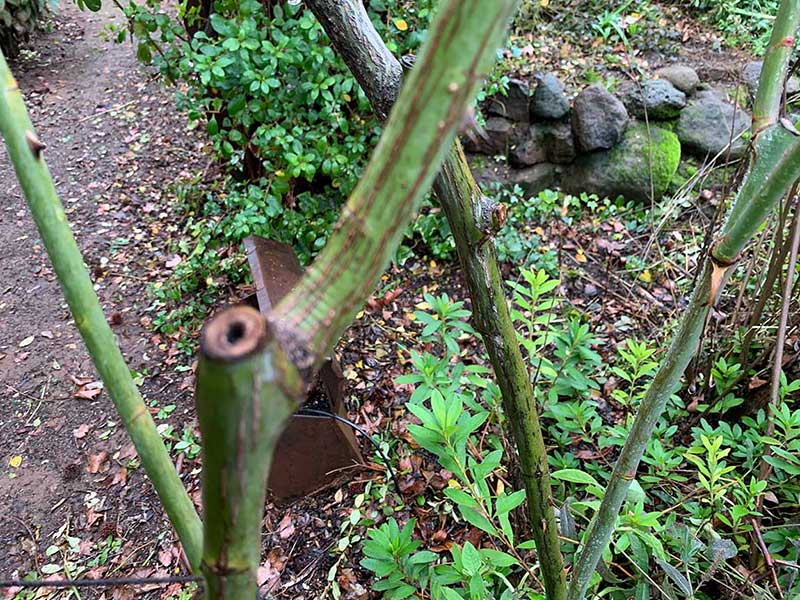If you are like most people you love the vibrant rose blooms, their beauty in some cases enhanced with a subtle fragrance.

Those beautiful blooms depend on proper pruning this time of year. Perhaps you’re an avid gardener and welcome the pruning ritual that renews the plants. Or perhaps pruning is not your favorite winter task when it’s still cold outside.
It’s early-March and in northern California your rose pruning should be underway if not already complete. My flower business has been quite busy since January pruning clients’ roses. I have watched in horror as “mow and blow” teams (or maybe our spouse?) spend maybe 2 minutes on a bush with a hedge-trimmer. Such a sinful approach will not encourage the best growth, and worse yet, often leaves jagged cuts on the canes that invite disease, bugs, and other bad things.
Instead of re-iterating instructions that are fairly well accepted in the gardening world, I have provided links below to a couple articles, courtesy of the El Dorado Master Gardeners, of which I am a member.
The first article I recommend focuses on rose pruning.
https://ucanr.edu/sites/EDC_Master_Gardeners/files/344420.pdf
The second article covers pruning in general but is a short read that you will find useful while planning your flower and tree maintenance for the year. It is penned by a friend and fellow master gardener, Laurel Rady.
https://ucanr.edu/sites/EDC_Master_Gardeners/files/335282.pdf
Most instructions will have you cut unhealthy canes back until you can see white-green cane, and there are no black or brown holes in the middle that are a popular home for borers and then disease that will ultimately damage or kill the rose plants. My husband recently questioned this advice on the cane shown below. It looks damaged but there was really nice growth last year further up the green cane. It’s a hard call, but I convinced him that the rose would be happier long term if it could concentrate on new growth and not also fight the borers and disease that are trying to make a home here.



I always find it hard to take out any growth that looks healthy. Your reasoning makes sense to look at this situation as a choice to concentrate the energy on new growth…not fighting a battle with disease or pests.
Thank you for sharing the beauty of your garden, Linda. It’s inspiring!